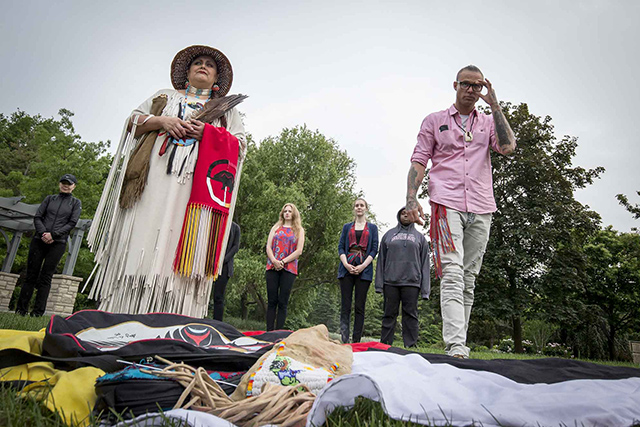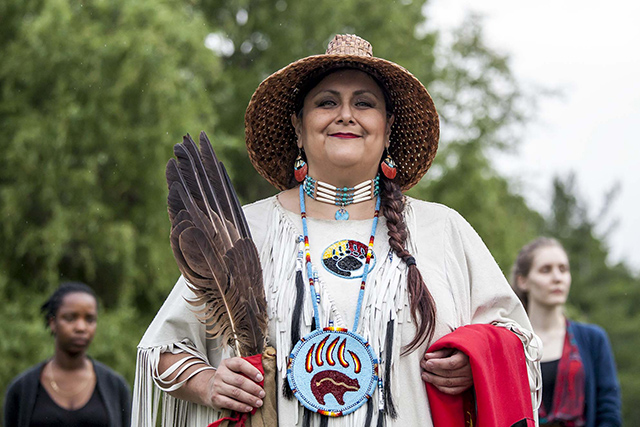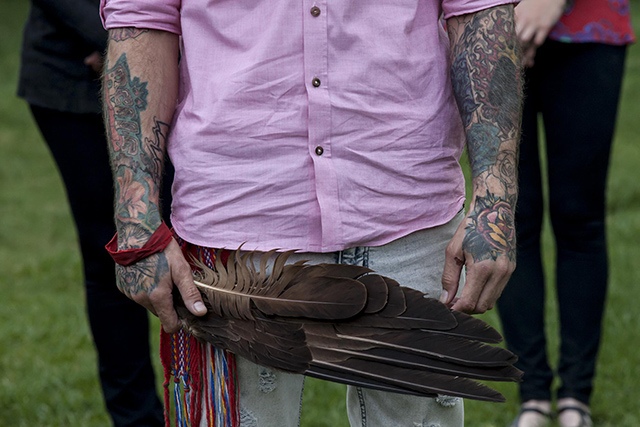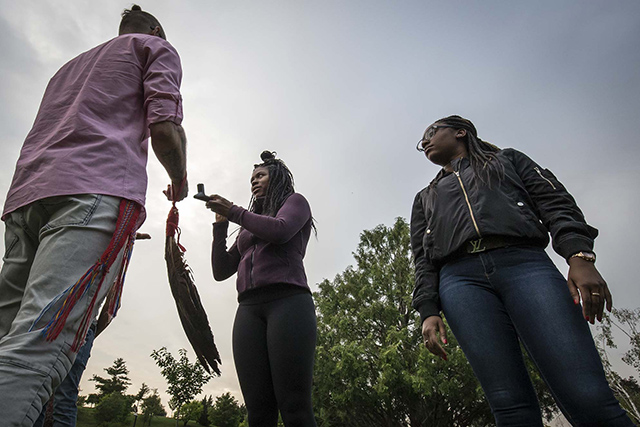Intro to Indigenous Studies course opens minds
View an accessible transcript of the above video
Most courses might begin with an introductory lecture or a walk through a course syllabus – but Intro to Indigenous Studies is not like most courses.
Instead, the University of Guelph-Humber course always opens with smudging, drumming and prayer for transformation and closes with smudging, drumming and prayer for reconciliation, during which the students form a sacred circle around Bear Standing Tall and Red Medicine Woman, also known respectively as Jason Rocky Carter and Pamela Carter, in the lush Humber Arboretum for a pipe ceremony.
Recently, the students smudged there as the two Knowledge and Wisdom Keepers drummed and prayed through song. Afterward, Bear Standing Tall explained how sharing his culture, spirituality and life experience over the course of the class was in line with the findings of the Truth and Reconciliation Commission, which produced 94 Calls to Action to redress the abuse and suffering resulting from residential schools and produce a reconciled state in the future.
“I think it’s time to be heard – to talk about spirituality, to talk about the strengths and contributions that Indigenous people have shared with Canadian society as a whole,” he said. “Indigenous knowledge is meant to benefit everybody, not just Indigenous people.”
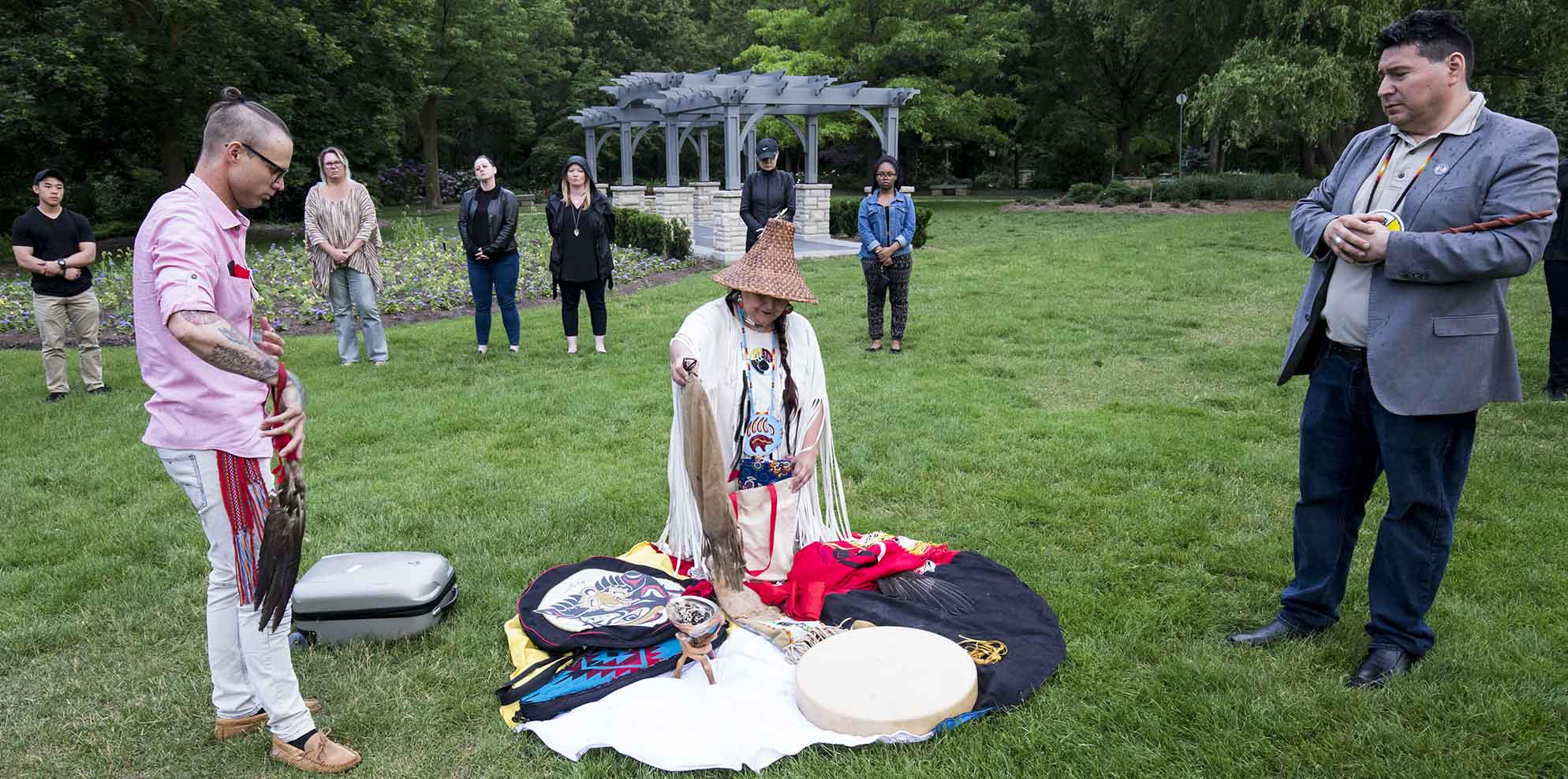 Certainly, many of the University of Guelph-Humber students who took the course found it no less than life-changing.
Certainly, many of the University of Guelph-Humber students who took the course found it no less than life-changing.
Originally, the course was developed as part of UofGH’s Early Childhood Studies program, but ultimately it was opened up to students of all programs. The course was created much differently than other courses as well.
“We decided early on this should be an experience course,” said Early Childhood Studies Program Head Dr. Nikki Martyn. “We knew we couldn’t teach it; the students had to feel it. We wanted to allow our students the opportunity to hear these stories and experience them from those who lived it. This isn’t us, as a university telling the students something. We are facilitating a discussion and a safe space for students to hear, understand and feel the stories of residential school and those impacted by it.
“It is like a living course.”
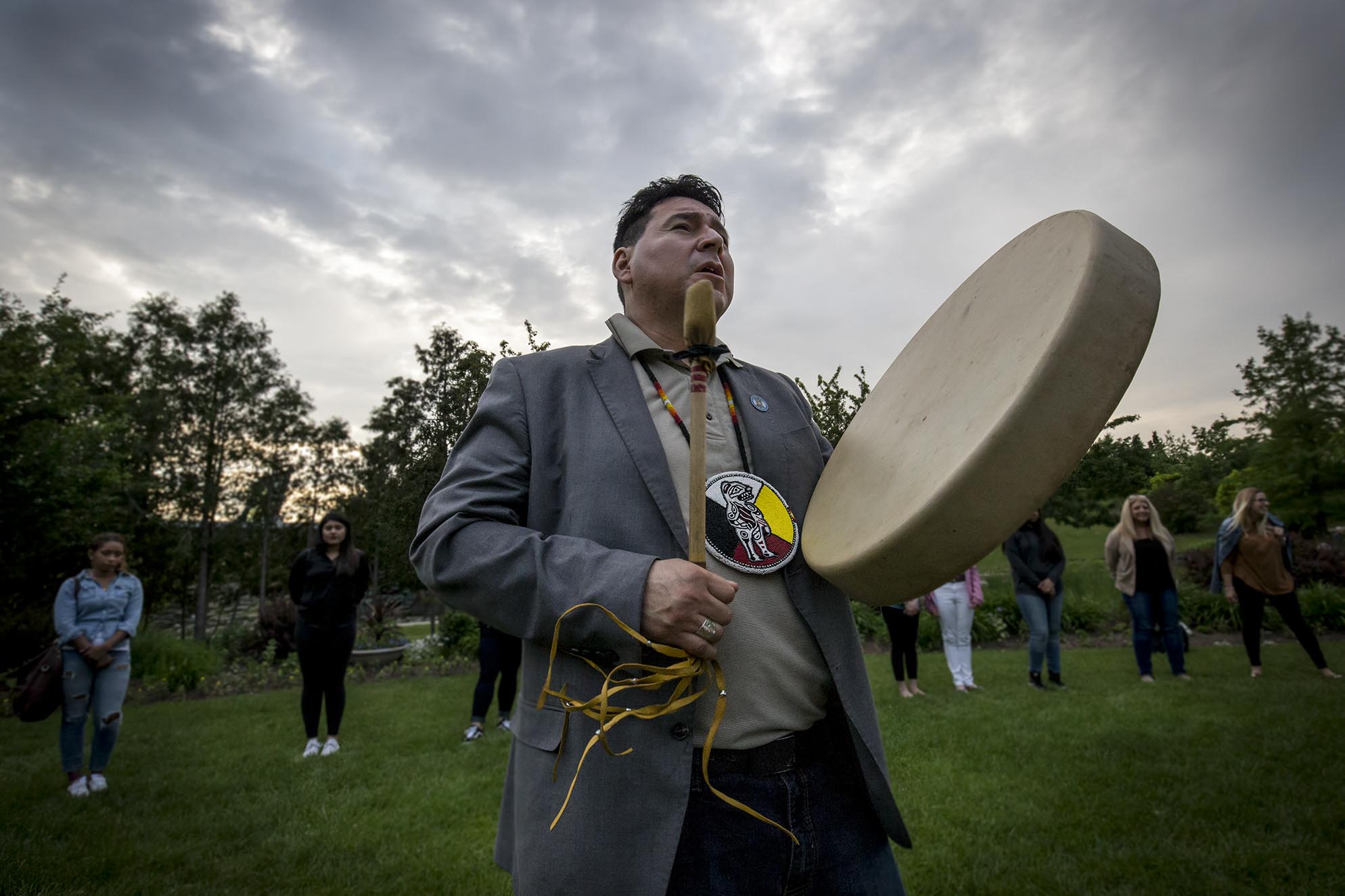
Instructor Christine Zupo sought out members of the Indigenous community who were residential school survivors themselves. Not only did those members help guide the vision for the course, they helped carry it out, visiting UofGH campus to share their experiences in the residential school system as well as their recovery journey with students.
“As a Knowledge and Wisdom Keeper, I advised and guided Christine Zupo with the creation and development of the Indigenous Studies course,” said Ed Sackaney of Fort Albany First Nation. “I have had the privilege of being invited as a guest speaker and to offer in-depth support to the numerous contents of Indigenous issues being taught.
“On every occasion of when I did the presentations, the enrolled students expressed resounding praises for the Indigenous curricula.”
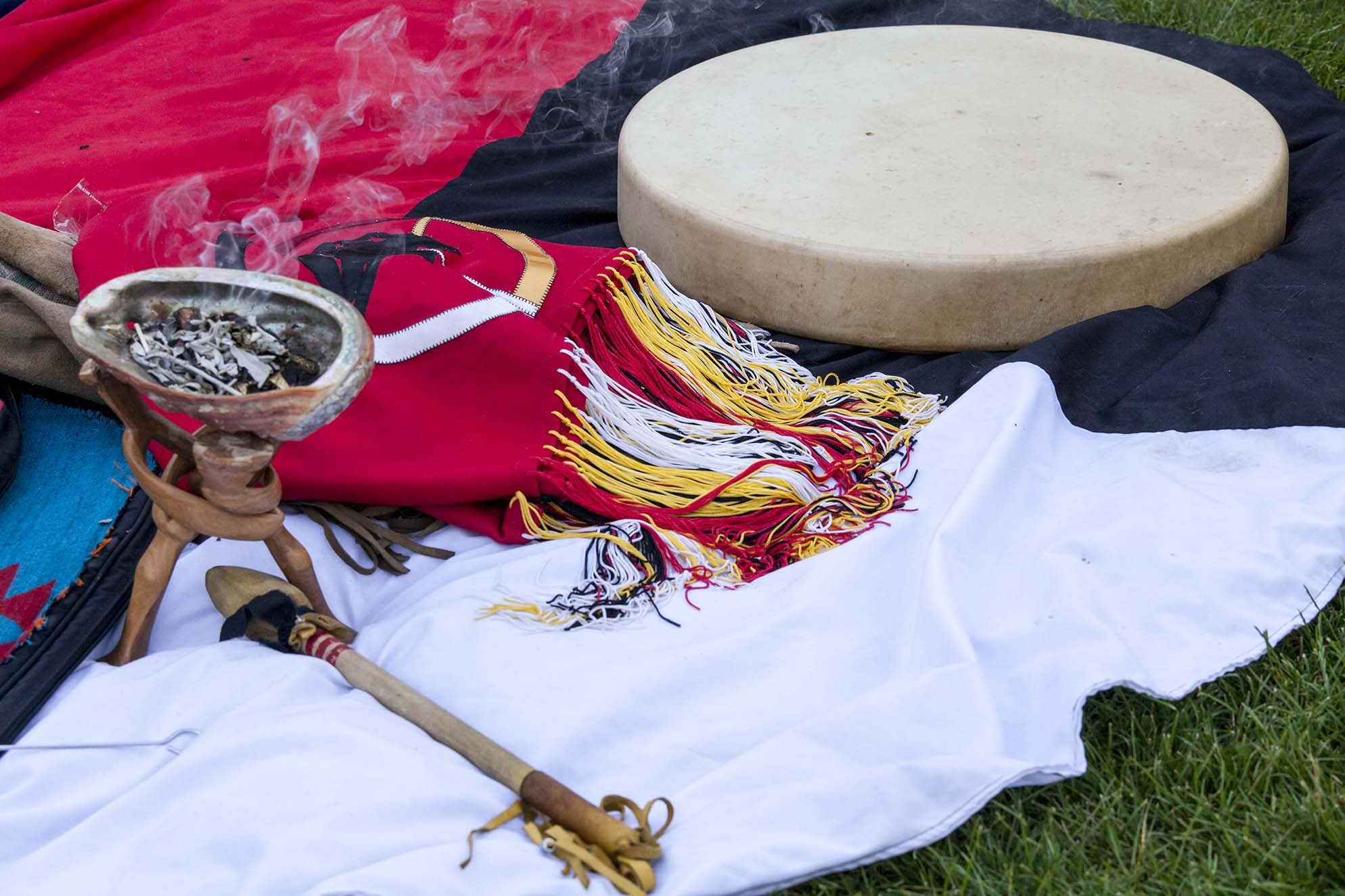
Zupo also brings the class off-campus to participate within the Indigenous community in various ways. For example, a visit to the former Mohawk Residential School to hear and see first-hand the former site of this government-funded, church-run school and hear about the shocking physical, emotional and verbal abuse that Indigenous children suffered there.
“It is the truth of stories of residential school survivors, and the teachings of the Elders and Knowledge and Wisdom Keepers that creates transformation,” Zupo said. “We are so grateful to all the visitors who shared their lived experience and knowledge with us. This is where the transformation lies. When we as Canadians come together to learn the truth, we naturally experience an urgent need for reconciliation.
“When you think about transformative learning, it’s about a structural shift in your thoughts, your actions, your feelings, and that seems to become quite evident within the course. And when students start to hear, learn and research Indigenous authors and through visits and through going out into the community, they start to understand the violence, injustice and oppression that Canada emerged from. That’s very transformative for them.”
“It’s good to have an authentic education,” added Bear Standing Tall. “When you bring people like myself and Pamela, we’re grassroots Indigenous people from Turtle Island and we’re also intergenerational survivors of Indian residential school. So what we talk about is lived experience. When we share those ceremonies with you, when we talk about our healing journeys, it’s really, really powerful.”
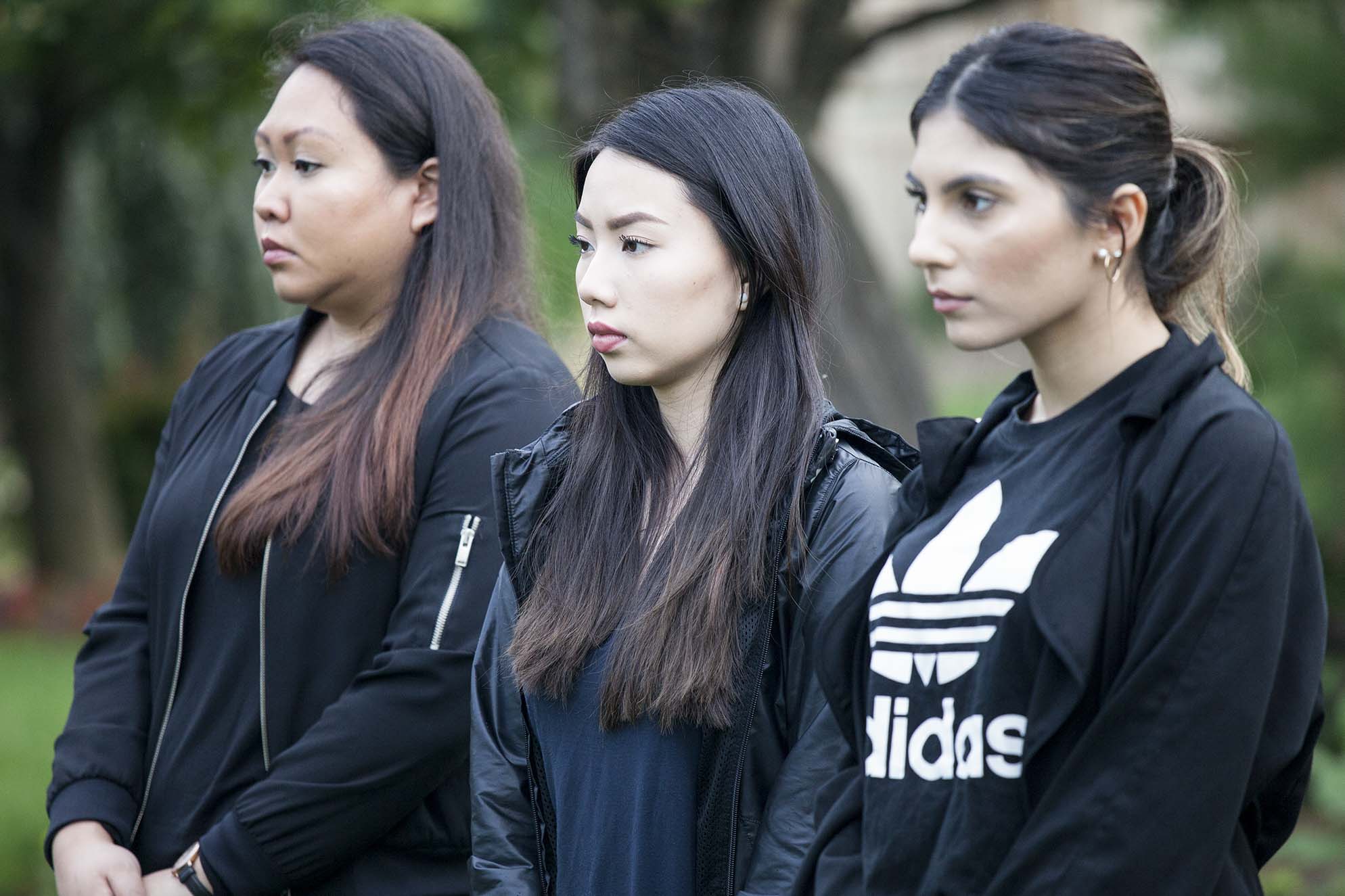
In fact, some students found the course so powerful they went through what Zupo calls a “disorienting dilemma.”
Jhanvi Jamindar was one of those students. As a business student, she had never experienced a class like this one, and until taking the course, she had never considered Canadian history from the perspective she was coming to understand here. At one point, she approached Zupo because she felt “lost in a sense,” having grown up with one vision of Canada that had now profoundly changed. That day, Red Medicine Woman visited the class, and her words resonated.
“She talked to us about how we could move forward, and how it’s not just about healing for the Indigenous people, it’s about healing for everyone. She taught us how we can move forward. She said we hold the future in our hands and we have the ability to create change.”
Certainly, the course has inspired some of its students. Business student Dilshan Jayasinghe not only recommended the course strongly to friends, he also immediately volunteered for the North American Indigenous Games, which are taking place in part on Humber College campus.
For Jamindar too, the course really did have a transformative effect.
“I learned about so many things, including myself. The person I am standing here now is not the person I was when I entered the course,” she said. “Before that, I was determining my specialization (in the Business program) and I was thinking finance, international business, marketing – I wasn’t sure.
“But after the class Pamela visited, we were standing and waiting for a bus and I looked at Dilshan and I told him: ‘I think I want to go into politics.’”



